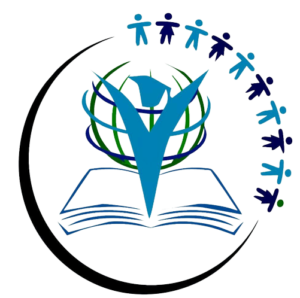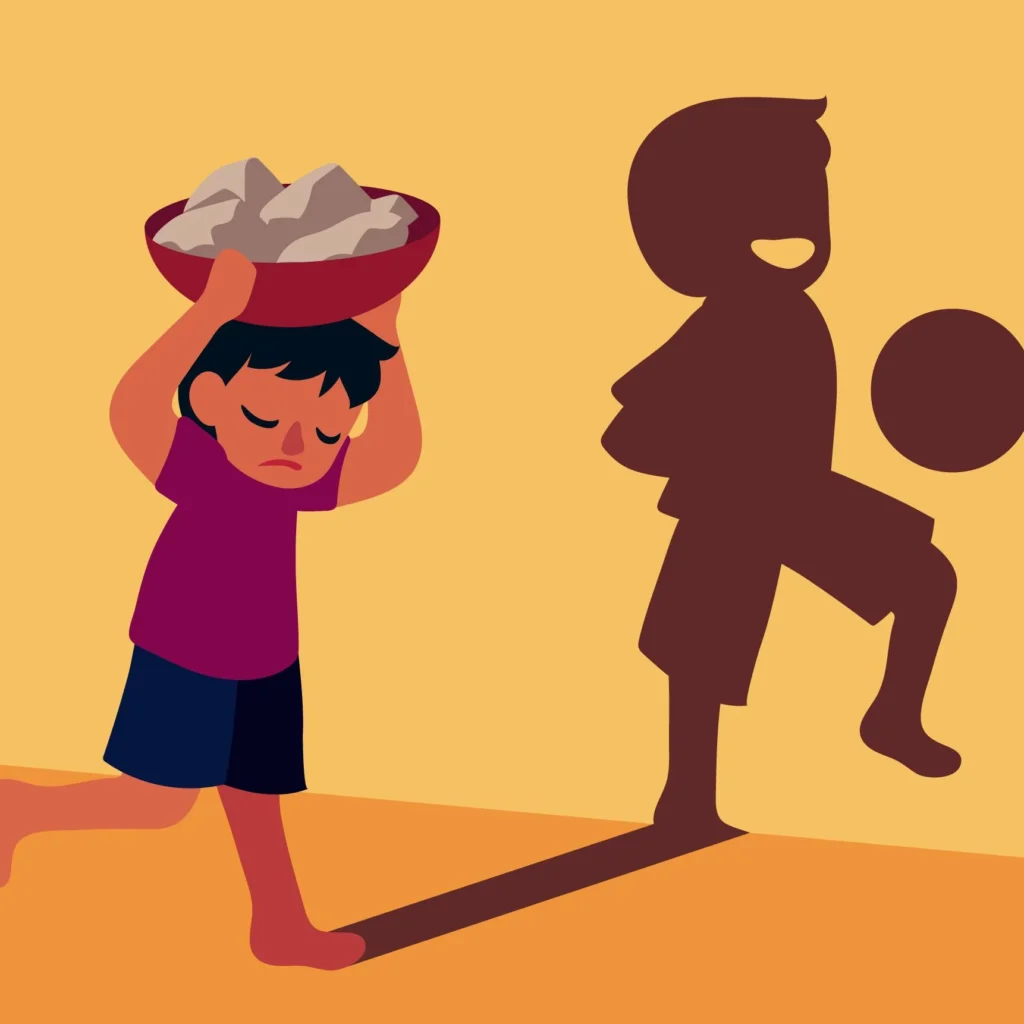Childhood is meant to be a time of learning, play, and growth, but for millions of children around the world, it’s a period overshadowed by exploitation and hardship. Child labor deprives children of their childhood, dignity, and right to education, while trapping them in cycles of poverty and abuse. Despite global efforts to combat it, child labor remains a widespread issue, especially in developing countries.
Child labor is not just an issue of exploitation; it’s a humanitarian crisis. Children forced into labor lose their chance to learn, grow, and thrive. They are robbed of the basic opportunities that could lead to a better life, trapped in a cycle of poverty that often spans generations. Addressing child labor is not only a moral obligation but a critical step toward building a more just and equitable world.
What is Child Labor?
Child labor refers to the employment of children in any form of work that interferes with their right to education, is hazardous, or is harmful to their health and development. According to the International Labour Organization (ILO), an estimated 160 million children are engaged in child labor globally, with many of them working in dangerous conditions.
Child labor often involves:
Agriculture: The majority of child laborers work in agriculture, cultivating crops like cotton, tobacco, coffee, and cocoa. Many of these children work long hours under extreme conditions, exposed to pesticides and heavy machinery.
Manufacturing and Factories: Many children work in factories producing goods such as textiles, electronics, and footwear. Often, these children are forced to work in cramped, unsafe environments for little or no pay.
Mining and Construction: Child laborers in the mining and construction industries face particularly dangerous conditions, working with heavy equipment, chemicals, and in life-threatening environments like tunnels and quarries.
Domestic Work: In many parts of the world, children, especially girls, are forced into domestic servitude, where they are subjected to long hours of labor, isolation, and, in many cases, abuse.
The Impact of Child Labor
The consequences of child labor are devastating. Beyond the immediate risks to health and safety, the long-term impact on a child’s physical, emotional, and intellectual development is profound.
Loss of Education: One of the most damaging aspects of child labor is the loss of educational opportunities. Children who are forced to work are often unable to attend school, missing out on the skills and knowledge needed to break the cycle of poverty. Without education, these children face a future of limited opportunities and low-paying jobs, perpetuating a cycle of poverty that can last for generations.
Health Hazards: Children who work in dangerous industries are exposed to physical and mental health risks. Long working hours, exposure to harmful chemicals, and poor working conditions often result in injuries, chronic illnesses, and even death. Additionally, the stress and trauma of child labor can have lasting psychological effects, including anxiety, depression, and a diminished sense of self-worth.
Social and Emotional Development: Child labor isolates children from their peers and families, depriving them of the social interactions crucial for healthy emotional development. Many child laborers are subjected to abuse, exploitation, and harsh conditions that leave deep emotional scars.
Perpetuation of Poverty: Child labor does not solve the problem of poverty; it reinforces it. Children who are denied education and forced to work become adults with limited skills and opportunities, continuing the cycle of poverty in their communities.
Causes of Child Labor
Several factors contribute to the prevalence of child labor, many of which are deeply rooted in systemic social, economic, and political challenges:
Poverty: Poverty is the most significant driver of child labor. Families struggling to survive may rely on their children’s earnings to make ends meet, particularly in countries where social safety nets are weak or non-existent.
Lack of Access to Education: In many regions, children are forced into labor because they lack access to quality education. Even when schools are available, hidden costs such as uniforms, books, and transportation can make education unaffordable for poor families.
Cultural Norms and Social Expectations: In some societies, child labor is accepted as a cultural norm, particularly in rural areas where children are expected to contribute to household income or assist in family-run businesses.
Weak Legal Frameworks and Enforcement: Inadequate labor laws or the lack of enforcement of existing laws allow child labor to thrive. Corruption, lack of resources, and poor governance often mean that child labor laws are not implemented effectively.
Conflict and Crisis: Conflict, displacement, and natural disasters exacerbate child labor by disrupting education and forcing children into work to support their families in times of crisis. Refugee children are especially vulnerable to exploitation and forced labor.
The Global Fight Against Child Labor
Efforts to eradicate child labor have been underway for decades, spearheaded by international organizations, governments, and NGOs. The International Labour Organization (ILO), through its conventions on child labor, has been instrumental in raising awareness and setting global standards for the elimination of child labor.
The ILO’s Convention No. 138 calls for the minimum age for employment to be no less than the age of completion of compulsory schooling (typically 15 years). Additionally, Convention No. 182 focuses on the worst forms of child labor, including hazardous work, slavery, and human trafficking.
Despite these efforts, progress has been slow, and the COVID-19 pandemic has further set back the global fight against child labor. School closures, economic instability, and increased poverty have forced more children into work, with global child labor numbers rising for the first time in two decades.
Education Lobby’s Role in Combatting Child Labor
Organizations like Education Lobby are at the forefront of the fight against child labor, working to address the root causes and provide children with the opportunity to reclaim their childhoods and futures. Education Lobby’s approach focuses on education, advocacy, and community involvement:
Education Access Programs: Education Lobby offers free and accessible education to children at risk of being forced into labor. By providing scholarships, school supplies, and safe learning environments, the NGO ensures that vulnerable children can attend school instead of being sent to work.
Community Awareness Campaigns: Working with local communities, Education Lobby runs awareness programs to educate parents, employers, and community leaders about the long-term harm caused by child labor. These campaigns emphasize the value of education and the importance of protecting children’s rights.
Legal Advocacy and Policy Change: Education Lobby advocates for stronger child labor laws and better enforcement mechanisms at the national and international levels. By collaborating with governments and global organizations, they push for policy changes that protect children from exploitation and ensure they remain in school.
Vocational Training for Families: To combat the economic drivers of child labor, Education Lobby provides vocational training and employment opportunities for parents. This enables families to become economically self-sufficient, reducing their reliance on income generated by their children.
How You Can Help End Child Labor
Ending child labor requires collective action from individuals, communities, businesses, and governments. Here’s how you can contribute to the fight:
Raise Awareness: Share information about the issue of child labor within your community and on social media platforms to raise awareness and mobilize support.
Support Ethical Businesses: Ensure that the products you buy are not made using child labor. Many industries, such as fashion and agriculture, are notorious for relying on child labor. Support brands that prioritize fair labor practices and transparency in their supply chains.
Donate to NGOs Fighting Child Labor: Organizations like Education Lobby rely on donations to fund their programs and advocacy efforts. Your financial support can directly impact children’s lives by providing education, food, and safety.
Advocate for Policy Change: Urge your government to prioritize the elimination of child labor by enforcing laws, increasing funding for education, and supporting global initiatives that fight exploitation.
A Brighter Future for Children
Child labor is an urgent issue that denies millions of children their fundamental rights to education, health, and safety. By addressing the root causes of child labor—poverty, lack of education, and weak legal frameworks—we can create a world where every child has the opportunity to learn, grow, and thrive.
Together, we can end child labor and secure a brighter future for all children. Let’s take a stand today, because when we protect childhood, we protect the future.
No child should ever be forced to work at the expense of their education and well-being. By joining the global fight against child labor, we can ensure that every child has the opportunity to enjoy a safe, healthy, and fulfilling childhood.



